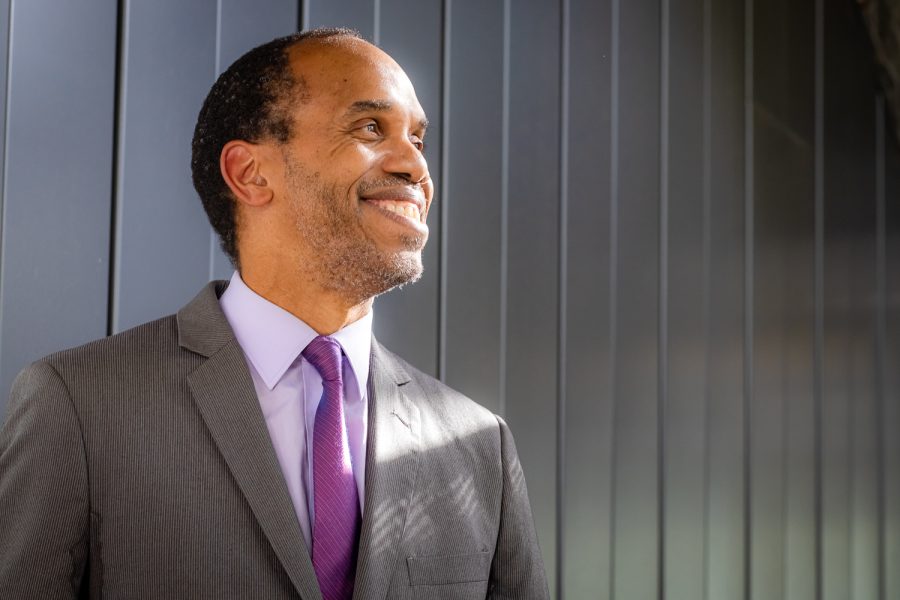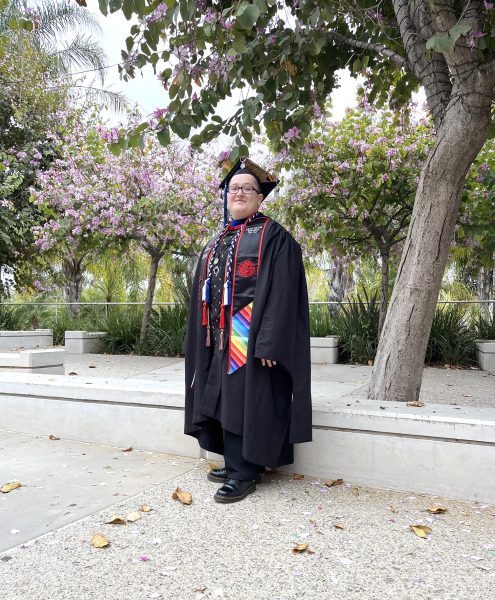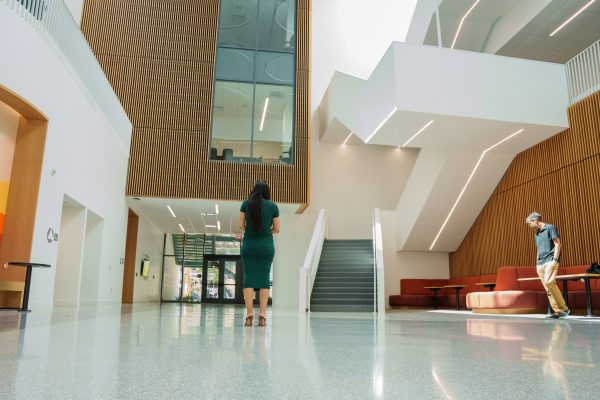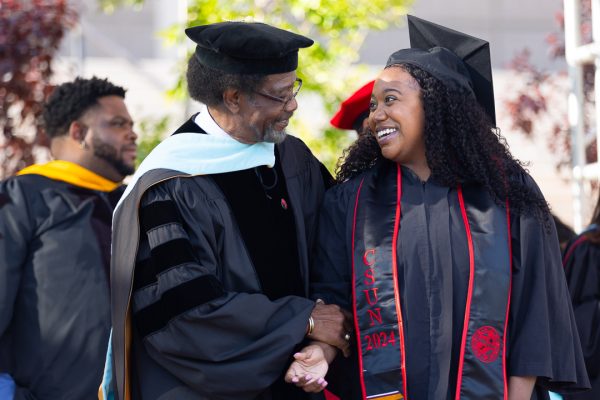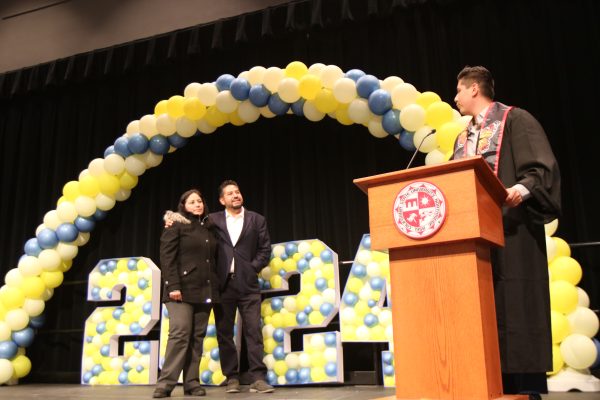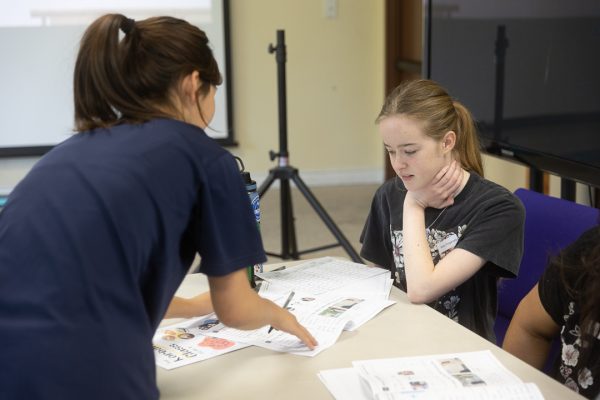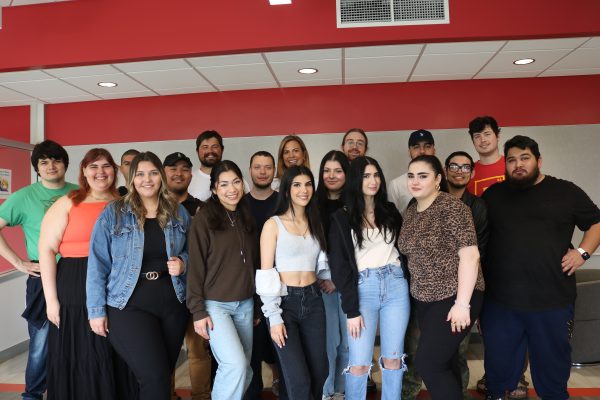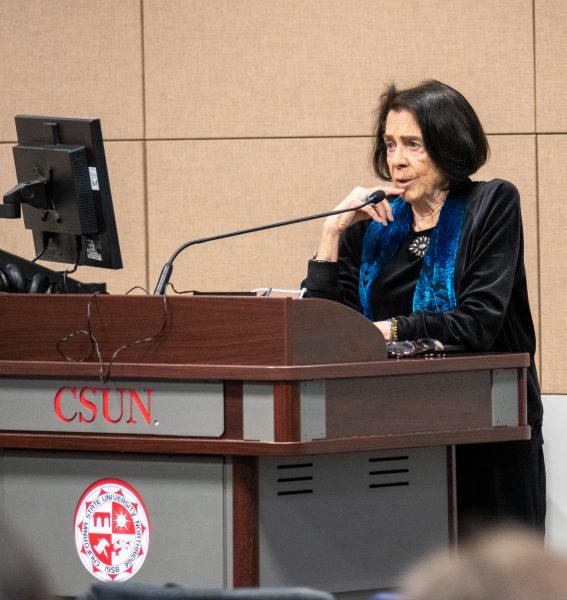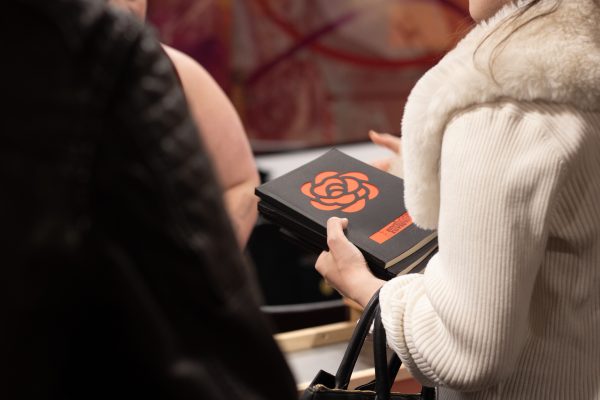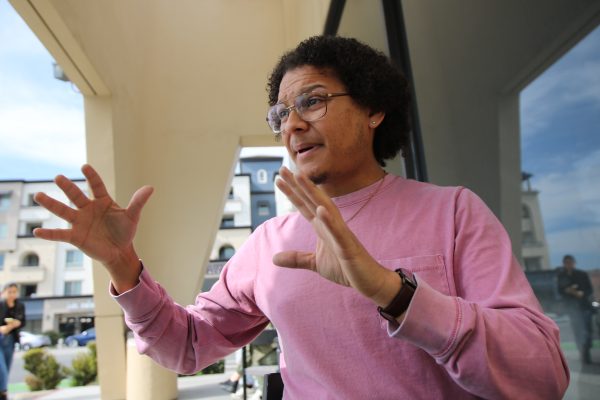The dream of a CSUN alum
Portrait of color designer at Disney Television Animation Studios, Jaison Wilson. Photo taken at CSUN on Tuesday, Dec. 6, 2022, in Northridge, Calif.
December 22, 2022
Jaison Wilson, a graduate of CSUN, is the ideal illustration of a dream chaser who took risks, believed in himself, and worked hard to become the successful artist he is today.
Wilson graduated from CSUN in 1990 with a bachelor’s degree and in 1996 with a master’s degree in fine art drawing. He then continued pursuing his art and illustration, ultimately landing a job working for Walt Disney Studios.
“There are a lot of incredible artists in this world who tried to work for Disney and never got to work for Disney. So the fact that I’ve made that and I’ve been able to do it a couple of times, I mean, you got to be grateful for that,” said Wilson.
As the youngest of five with a single mother, Wilson recalled figuring many things out independently and trying to do his best. Despite this, he always felt supported and inspired to follow his passions, spending much time participating in art events and contests.
“My brother Terry, he’s an artist that kind of carved the way, artistically. He’s 10 years older than me, so it’s funny, the same family, but you all do your own thing still. I think the structure that I got was just the support to do whatever. I was always supported at whatever I did, I just had to figure it out,” Wilson said.
Wilson experienced a good amount of trial and error before becoming a successful color designer at Disney. After four attempts to get a job there, Wilson finally landed his dream job in 2000.
Working a total of six years just to get a job at the Walt Disney Studios in California, Wilson was offered a position at the Orlando studios. While it was hard for him to imagine relocating, he acknowledged that this was his chance to accomplish the goals he had been working toward.
“You can’t sit there and try for six years to ask for something and then all of a sudden say, ‘Well, you know, I think it needs to be more convenient for me,’” Wilson said.
After taking the position, the Orlando studio closed in 2004, leaving Wilson at square one with no job and struggling to pay his bills. His concern for landing another decent job grew heavier as he lost the closest chance he had to his dreams.
“I got to the point where it’s OK to be inconvenienced. I’ve grown more by letting myself be inconvenienced because I realized that if you just stay safe, you’re not growing, you’re not moving, and you’re not doing anything,” Wilson said. “It’s very easy to get stuck in a career that never goes nowhere.”
At the time Wilson lost his job, he was also about to have his first child, which he had wished to be financially prepared for. He had wanted to get a decent job before having children, but things didn’t exactly go as planned.
“This is about, you know, sometimes you might have to try this many times, there are people who have tried more times than you have, and it’s never happened for them,” Wilson said. “We can be so self-centered and make ourselves victims, create sympathy for ourselves, when things aren’t going great or perfect, you know, but it’s a part of the process.”
Looking back now, however, Wilson is grateful that he didn’t put raising a family off for financial reasons for too long.
“You basically are holding back experience in life for something that might not happen. And if it didn’t happen, all you have is all that time where your life could have been, where it could have been different and gone a completely different way, in terms of how you’re experiencing it,” Wilson said.
In 2008, Wilson received another opportunity to work with Disney on “The Princess and the Frog.” From then on, he worked on designing color for multiple movies and television shows.
“I worked on ‘The Princess and the Frog,’ ‘Lilo and Stitch,’ and ‘Brother Bear’. Then the television shows that I’ve been working on since I’ve been at Disney is ‘Milo Murphy’s Law,’ ‘The Phineas’, and ‘Ferb’ movie, and I worked on a show called ‘Amphibia,’” Wilson said. “And the show that I’m currently working on is ‘Hailey’s On It,’ which will be out next year.”
His start as a color designer started with just one person believing that he could create something unique. A man named Donald Towns was co-art director and background supervisor for “Beauty and the Beast,” and he allowed Wilson to demonstrate his talents and what he was made of.
While taking a background painting class outside of CSUN, Towns was brought to one of the presentations where the teacher introduced Wilson to him. Wilson asked him if he could freelance for a project Towns was doing after Disney as the lead background painter.
“At some point in time, I said, you know, I just want … the opportunity to try. And he gave me the opportunity to try. So I would say when you don’t have at least one person that can validate that you have something, you know, it’s hard to keep believing it on your own,” said Wilson.
Towns was able to help ease Wilson into the industry with some advice that changed his perception of his journey. Although Wilson was becoming passionate about his career, he learned early on that there needed to be some balance in his life outside of work.
“I think that the greatest story that he told me that always stuck with me more than any other. When he was working on ‘Beauty and the Beast,’ he was working crazy hours, just because he was the head of backgrounds … on that film. And it was around the time his first child was born, he worked so many hours trying to prove himself because that’s what you’re doing. You’re trying to prove yourself,” said Wilson. “You have this big responsibility on you, you’re doing all these wonderful things. You know, by the end of that time, his child barely knew him because he had been working so much. I thought, ‘You know, yeah, I’m working so hard on making this career happen, but I can’t work so much that your family doesn’t know who you are.’ And I wanted to always keep that in my mind that don’t put work as such an important thing.”
Wilson has been married for years with a son and a daughter.
When he was younger, Wilson’s mother encouraged him to pursue engineering because of his creative talents, but he reflected on how math was difficult for him and wonders if it would’ve made a difference in his life later down the line.
Despite being successful, at some points in his life, like most people, Wilson developed some regrets and overall insecurity regarding his work, especially when things didn’t go his way.
“It wasn’t about being an engineer, but that I didn’t do better in math because there are aspects of doing this industry that become more technical. And those areas I’ve not been able to transfer into because I didn’t have that background early on so that limited me later on,” he said.
Wilson has spent years trying to improve not only his craft but his communication skills as well. He believes that collecting skills throughout life is the best way to grow and focus on what separates him from others.
When he entered the industry, Wilson was shy and struggled to network, which he knew was crucial to expanding his career. He started learning to connect with coworkers by showing interest in how they were doing.
“If I ask you how your day is going on this week it’s because I really want your day to be going well,” Wilson said. “These are the networking skills that I’ve been developing. And that allow me to feel better about the work that I do.”
Wilson reflected on the best job he ever had when he worked on “The Princess and the Frog” for Disney because the art director could tell that he put a lot of work and effort in for every scene he got to work on.
For specifics, the scene was the longest in the movie, where Dr. Facilier danced with voodoo dolls, and in the end, he slid with his knees forward as fireworks went off.
The art director trusted Wilson enough to give him each storyboard panel he created for the sequence. Wilson had to match the color of every single panel to what the director had developed.
Wilson remarked with a big smile, “I matched every one of them perfectly.”
“It just made me feel special that I could do it and that somebody trusted me to do it,” Wilson said. “You know you don’t get that all the time, and since then, I haven’t gotten anything that’s come close to that.”
Reflecting on his journey to success, Wilson expressed his appreciation and acknowledgment that he has a lot to be thankful for, including his family and the people that supported him along the way.
“The one thing that I think I’m most grateful for is the fact that my whole career, I’ve been able to be an artist,” Wilson said. “That, to me, is incredible in and of itself.”
